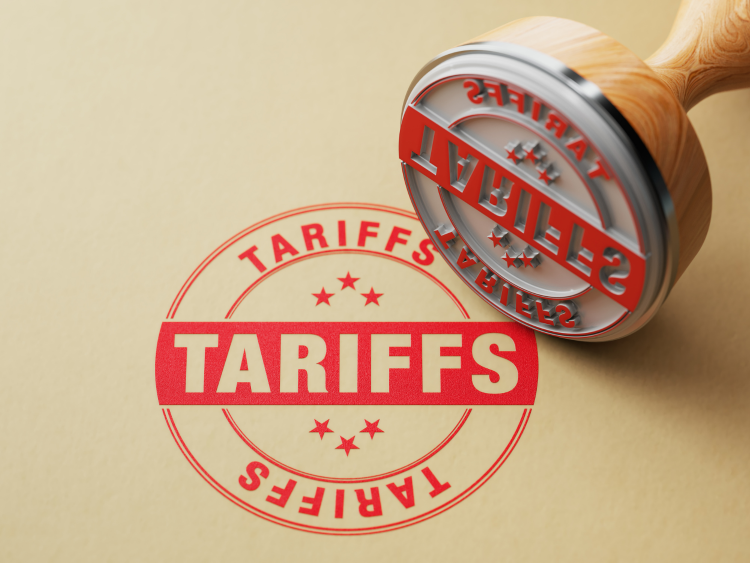Final Thoughts

March 13, 2025
Tariff turmoil, Part 2: Navigating the premiums puzzle
Written by Greg Wittbecker
A second week of tariff turmoil, and we’re updating the chronology. In case you missed it, we covered the initial twists and turns last week in Tariff turmoil: The ever-changing playbook.
- January 21 – Promised tariffs on Canada and Mexico
- February 1 – Officially announced tariffs on Canada and Mexico
- February 3 – Delayed Canada and Mexico tariffs 30 days
- February 27– Announced tariffs would go into effect March 4 for both countries
- March 4 – Implemented the 25% tariffs on Canada and Mexico from midnight
- March 5 – Suspended tariffs on autos for 1 month
- March 6 – Suspended broad country of origin tariffs for 1 month provided they comply with USMCA rules of origin.
- March 11 – Trump threatens to double the Canadian duty on aluminum and steel in response to Ontario’s placement of a 25% export duty on electricity exports to the U.S.
- March 12 – Trump rescinds threat to double the Canadian duty when Ontario removes its 25% export duty on power and engages with Department of Commerce
Midwest premiums don’t reflect replacement cost based on duties, do they?
As we go to press, the Chicago Mercantile Exchange (CME) derivative contract on Midwest premiums (MWP) shows March at $0.4110/lb with April/May around $0.3970/lb and the 2nd half of 2025 at $0.3750/lb.
All these numbers reflect a discount to what premiums should be trading at under different duty scenarios. Why is that?
The most plausible explanation is that the leading Price Reporting Agencies are unable to validate physical trade at higher numbers, which would allow them to print higher premiums.
From a seller’s perspective, it is surely tempting to take profits after the run we have seen in MWP in less than two months. Prior to Inauguration Day, MWP was trading at $0.2385/lb. At current nominal premiums, premium “longs” stand to make about $0.1700/lb. Depending on the size of their “long” positions, the profit might make their 2025 year. So, it could be expected that some are selling onto the market and fading the published numbers.
Handicapping the different tariff scenarios
To help you make sense of this chaos, we want to provide a primer on how to think about premiums under different tariff scenarios. You can use this chart to track where the market stands relative to different potential replacement costs. Of course, every situation is different, so consider this as a general guide rather than a one-size-fits-all approach.
Let’s start with some basic assumptions to keep in mind:
- Plug in a value for the London Metal Exchange (LME) cash price which comprises the biggest component of building out the tariff calculation.
- Incorporate something for the intrinsic value of physical metal CIF (Cost Insurance and Freight) delivered to a U.S. port of entry, be it Detroit, Baltimore, New Orleans, or Houston. Our discussions with people over the past two weeks have found this is an often-overlooked component of the calculation. For purposes of our models, we are going to use the value of Rotterdam duty unpaid metal as a proxy for the U.S. duty unpaid premium. Why? The main reason is there is not much trade in U.S. duty unpaid, while Rotterdam is an actively traded market. It is also the alternative market that most overseas primary producers are looking at as an alternative to shipping to the U.S. market.
Now the fun begins, laying out the different combinations of duties that may eventually influence the direction of MWP:
- Tariff 1 scenario – Section 232 at 25% applied to all origins without exception, i.e., no exemption granted. This is where we are today.
- Tariff 2 scenario – Section 232 at 25% with Canadian aluminum enjoying full exemption from Canadian country of origin (COO) 25% that may take effect in April. There is no precedent for this so far. This would be the same as Number 1, but it is important to flag the variable of the country of origin.
- Tariff 3 scenario – Section 232 at 25% with Canadian aluminum at 10% duty on COO basis treatment as a critical mineral. This is the treatment that Canadian crude oil and potash now enjoy.
- Tariff 4 scenario – Section 232 at 25% and Canadian aluminum taxed at the full 25% for COO. This is Canada’s worst-case scenario and one that we believe will not get priced in the MWP structure. Why? Despite Canada being the largest single supplier to the U.S., other origins will have the lower Section 232 duty and enjoy massive competitive advantage vis-à-vis Canada. It will take time, but eventually other origins will displace Canadian supply to the U.S. Canada will rotate its exports to the EU or Asia.
Here is the math as of 13 March 2025:
| Tariff 1 Scenario | Tariff 2 Scenario | Tariff 3 Scenario | Tariff 4 Scenario | |
| Section 232 25% | Section 232 25% +0% COO | Section 232 25% +10% COO | Section 232 25% +25% COO | |
| LME cash price ($ MT) | 2737 | 2737 | 2737 | 2737 |
| Rotterdam duty unpaid premium | 210 | 210 | 210 | 210 |
| Total price for duty | 2947 | 2947 | 2947 | 2947 |
| Section 232 | 736.75 | 736.75 | 736.75 | 736.75 |
| COO | 0 | 0 | 294.70 | 736.75 |
| Total duty paid MW price | 3683.75 | 3683.75 | 3978.45 | 4420.50 |
| Implied MWP to LME | 946.75 | 946.75 | 1241.45 | 1683.50 |
| Implied premium (¢/lb) | $0.429 | $0.429 | $0.563 | $0.764 |
So, comparing our Tariff 1 scenario to the prevailing market, it is remarkably close. The market is doing its job in correlating replacement to current valuation.
Whether the other scenarios happen remains to be seen. We have seen forecasts from other analysts suggesting MWP could reach $0.65/lb. We do not know what assumptions they are making about the mix of tariffs to be applied but based on current LME and duty unpaid premiums, we reverse engineered it to an implied duty structure of 41.5%. As argued above in our commentary about the Tariff 4 scenario, too much competition from non-Canadian origins.
Is there a best-case scenario for Canada not on the board?
Hope brings eternal and there are always people thinking Canada and the U.S. will kiss and make up. We have talked to many Canadians since this began and they think the relationship with the U.S. is terribly damaged. The constant jabs about making Canada the 51st state have united Canadians across the political spectrum. Canada is in no mood to surrender its sovereignty and is not going to roll over and die in the face of Trump’s bullying tactics.
The big unknown is, what is the realistic “ask” of the Trump Administration? If Canada could meet the demands, could Canada achieve an exemption from Section 232 again? Maybe, but I think the COO precedent set on crude oil and potash may still be there.
If, and that’s a big if, Canada got Section 232 exemption and was left only with COO exposure, one would argue that MWP would continue to price clear at the Section 232 tariff of 25%. This would continue the pattern under the old Section 232 regime, where Canada enjoyed exemption from the 10% duty, but the market traded basis the exposure of the most disadvantaged importers.
Stay tuned for next week’s update.





